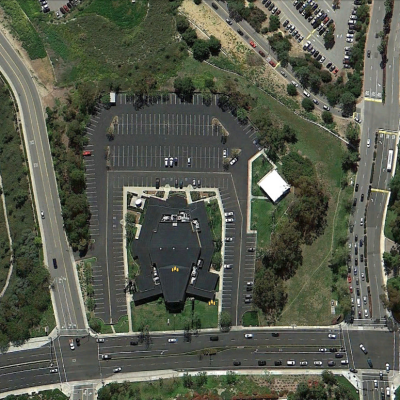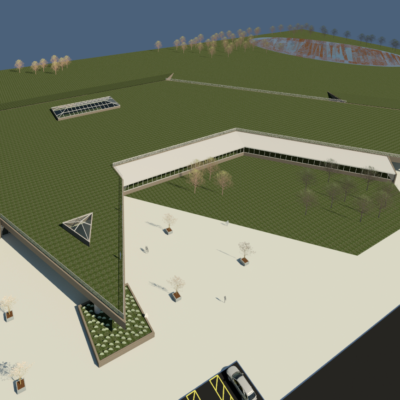
I grew up in Southern California in the 1950’s and 60’s. Most of my memories of our small three bedroom home on Towner Street are in black and white. We didn’t have much, and I don’t remember spending too much time worrying about it. Life was very different then. The Korean War had just ended, Queen Elizabeth II was crowned queen, and I Love Lucy was in its second season. Sometimes I find my early childhood memories getting mixed in with episodes of “Leave it to Beaver”, “Ozzie and Harriet”, and the “Donna Reed Show”. Words such as simple and uncomplicated come to mind. As a kid I never heard mom say, “Put on your seat belt.” There were no seat belts, air bags, or catalytic converters. Yet, I never worried about it or felt at risk. Back then, I didn’t know any better.
Our home was nothing special, just like the other homes in the neighborhood. But they served their primary purpose of providing shelter. It was a nice, stable, lower middle-class neighborhood. No one had central air conditioning or heating. When it was hot we opened the windows and let in the afternoon breeze. When it was cold we banged on the gas fired wall heater that rarely worked when you wanted it to, and when it did, we would have to stand directly in front of it to warm ourselves while we dressed for school. At night, during the colder months, I would put on thicker pajamas and socks, add a couple more blankets to the bed and, as a finishing touch, wear a ski cap to keep my head warm. I remember complaining about the days when it was too hot or too cold, but that was the extent of it. I couldn’t do much more about it. We just dealt with it.
Perhaps I should count my blessings when compared to those who lived 100 years earlier. Construction in the 1850’s was comparatively primitive. The vast majority of building materials used were extracted from the surrounding environment. Fireplaces were constructed, not for aesthetics, but to heat and cook. There was no electricity or any need for it. They were not tied to a local utility grid for power. They used candles or oil lamps. When it was hot, they opened the windows and placed more wood or coal on the fire when it was cold. This was the lifestyle of the time, where people were connected to the weather conditions and seasons of the year, just like their fathers, grandfathers, and great-grandfathers. It was just good common sense to do so. Besides, there was no alternative.
Today, however, we are reaping the so-called benefits of a multitude of alternatives; alternatives that distance ourselves from a natural connection to the environment. Central air conditioning and heating is now common. No more banging on the gas-fired wall heater. A wide selection of electronic conveniences, appliances, flat screen TVs, computers, tablets, entertainment centers, and other devices are now considered “must haves” in our homes. In as short as three or four generations we have grown dependent on machines to sustain us. The exception has now become the rule, the standard for what is considered acceptable living . . . but at what expense? Gone are the days of the Little House on the Prairie. Today, it doesn’t matter what the temperature is outside. Inside is a cool 72 degrees. Modern technology has perfected an economical way to live anywhere, insulated from external natural forces. We have become experts at creating artificial environments that sustain us . . . that is, as long as the resources are available to supply the power. Whether in the blistering Arizona desert, frozen Minnesota tundra, or steamy Florida humidity, technology has evolved to enable us to live in these harsh environments in relative comfort. Even Antarctica has numerous facilities that are inhabited year-round.
For the longest time we have accepted this as progress, as growth, but within the last few decades a growing number of people are asking important questions regarding the direction we are going:
- Is it really considered progress to deplete our non-renewable resources by providing energy at an unsustainable rate?
- Does Government have a role in providing incentives that promote a sustainable environment, one that balances what we build with the natural environment in a way that positively benefits the surrounding community?
- Maximizing residential densities end up creating block after block of small, independent islands, divided by concrete sidewalks and asphalt streets. How many streets must a child cross just to get to school and back? Is this the only way to design developments, or can concrete and asphalt be minimized to allow for larger non-island communities, where nature and families can thrive together, safely?
- Is it possible to reshape our living environment and our sense of community by decreasing hardscape and increasing softscape? How many scholarly studies cover the psychological effects of inner-city asphalt jungles on our children? We can do better!
- Do governmental master planning and zoning efforts need to change to assure that future developments reflect softer, balanced, and sustainable living environments?
Sustainable Architecture strives to balance the natural environment with the community at large, benefiting the individual in a positive way. This is achieved through strict compliance with a master plan and building in context to it. Design is no longer done in isolation of what is next door or across the street, but in context with the overall master plan. Architects may complain that their design freedoms are being infringed upon and that it is unfair to expect them to adhere to a comprehensive master plan, which may limit potential options for a specific site. I would be inclined to agree. But what is the alternative? Do we continue to create more asphalt jungles like Detroit, Manhattan, Baltimore, Pittsburgh, and South Los Angeles? Do we turn our backs to the increasing amount of urban crime, unrest, and bullying that’s dividing our nation? Or do we admit that our profession could have stepped up and resisted the perpetuation of more and more concrete, asphalt, and brick? This needs to change and we are the ones who can champion the cause.
Who’s with me?









